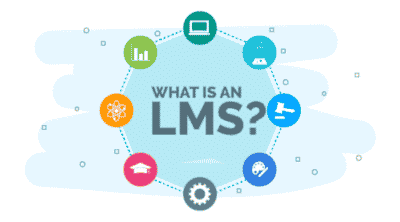With the advancements in technology, online training has taken center stage because it is flexible, affordable, manageable, and provides smooth learning. There is a massive upsurge in the traffic of online training platforms as more and more online learners or employees want to engage in meaningful learning.
Working professionals are now seeking self-directed learning. They want to utilize their time to improve knowledge, acquire new skills, or re-skill and upskill themselves with changing times.
If you think of online training, the first thing that comes to your mind would be a learning management system, commonly known as an LMS. An LMS is a tool that is highly used for training purposes. It helps to create, deliver and manage training effectively.
There are a variety of LMSs available today in the market. One such LMS is an open-source learning management system. Open-source learning management systems are often considered to be completely “free” LMSs. However, this is a wrong misconception that people carry in their heads.
An open-source learning management system depicts a platform where you can freely modify the online training material and modules. You can also change your branding. Hence, we can say that an open-source LMS is not necessarily “free of cost” but freely changeable or adjustable.
Let’s now try to unearth the reasons why an open-source LMS is so important:
#1. Customization
Open-source software provides you with a customization option that can ensure that online learners get a fantastic user experience. The content, the branding, the interface, and all the other elements can be modified easily.
For example, you can design and customize your welcome screen for online learners. You can show them a glimpse of all the online training courses, contents, and modules you offer, their price, monthly or annual subscription plans, duration of courses, past achievements of your organization, and so on.
This way, online learners will view it as a more credible source for imparting knowledge. This is one way of advertising your services.
#2. More support
If you choose an open-source LMS, you’ll have greater choice when it comes to gathering support. You can avoid any sort of vendor lock-in when it comes to licensing.
You can look for other vendors who can fulfil your demands and wishes. When you have a large support system of LMS vendors, you can pick and choose based on your needs, budget, and what the online learners want. You can switch to a new LMS vendor without worrying about losing existing data.
#3. Scalability
Open-source LMS is highly scalable. This means that an eLearning platform grows as your organization keeps evolving. When your business needs and demands change with time, an open-source LMS also adapts itself to cater to your needs.
You can increase access to eLearning material or decrease your bandwidth to fit the needs of the present moment, but with a guarantee that comes from knowing the software will fit your requirements today and even later.
An Open source LMS ensures that:
- It can tolerate an increasing number of online learners
- With extending branches of your organization, the administrators can access the eLearning platform smoothly
- Online learners do not experience glitches and delays in accessing the eLearning material stored in the online digital library
- Security is maintained despite the increasing number of online learners
An open-source LMS can also act as a mobile learning platform. This allows online learners to access online training materials even using mobile devices.
#4. Automatic upgrades
Open-source LMS is constantly undergoing transformation, which means you should have the best system at any point in time. An open-source LMS automatically gets upgraded to the newest version without any help from the IT experts. This not just saves your precious time and money but also allows your technical team to focus on other critical work.
#5. Automatically updated
All learning management system software needs updates over time. Such updates could be either security-related or functions related. When there is any new update in the market that allows you to add new content or leverage new technological advancements, like games and gamified system elements, such as leaderboards, trophies, etc., you’d want to update your LMS too.
With open-source software, you are responsible for managing all the updates on your own. There might be some new updates that you don’t want to use. In such cases, you can simply avoid the updates. However, if you think you need those updates, you can surely revise your existing LMS.
#6. Reliable
Today, more and more EdTech platforms and organizations keep an eye on open source software because it offers users enormous perks. Since more and more users are embracing it, it has become a more reliable option to go for.
#7. Lower costs
Open-source software is low cost, and hence, an institution or company of virtually any size can adopt it. Even a startup with hundreds of employees can use it. By holding on to such a low-cost solution, you can allocate your budget towards other maintenance requirements and services.
#8. Integrations
Today, many organizations want and need to integrate a variety of tools and applications into existing learning management systems. Such integrations effectively streamline and organize the data and eLearning content within your training ecosystem.
- Single sign-on integration
The single sign-on feature allows online learners to automatically sign in to their training platform account using the login information of their existing accounts. It means that using the same login ID and password, you can log into your system easily. You don’t have to create a new user ID and password.
- E-commerce integration
Using e-commerce integration, you can create, deliver and sell your online training courses, modules, and materials all across the world. An open-source software offering such integration features can help you raise revenues and profits. It is the best way to reach out to different learners scattered across different locations.
- Calendar integration
Open-source LMS also offers calendar integration that keeps online learners updated and informed about upcoming online training courses.
- Video conferencing integration
Video conferencing integration is one of the best ways to bring the entire team together and get them involved in online training. Web conferencing tools allow you to host live events and increase the active participation of online learners.
Conclusion
Open-source learning management systems give you the liberty to customize, upgrade, and choose how you want to design and run your training and development program. Today, there are a variety of LMS vendors offering open-source LMS software. Before you pick any of them, try to draw comparisons based on features, price, customization offers, etc.
Related Article: SUBSCRIPTION MANAGEMENT: Best Practices & Software Solutions






